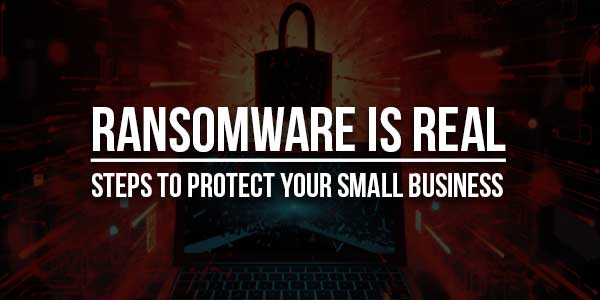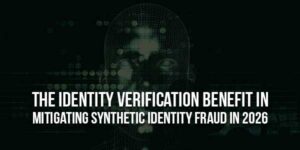
The emergence of ransomware as a significant danger to small businesses has been alarming. This kind of malware can potentially interrupt operations and cost organizations significant money each year. Protecting sensitive company information from ransomware requires understanding ransomware protection for small businesses.
Ransomware and other cyber threats may affect any firm, big or small. No matter how big or small a company is, these assaults may still impair operations and cause expensive downtime. Because fraudsters are always coming up with new ways to attack, companies need to take proactive measures to improve their security, including protection against ransomware.
In this blog, describe ransomware, how it impacts companies, and the steps you can take to stop an attack and protect your firm from catastrophic damages.
Table of Contents
What Is Ransomware?
Ransomware has emerged as one of the most perilous predators. But what precisely is it? Ransomware is malicious software designed to prevent users from accessing their data. It digitally encrypts the victim’s data to do this. Cybercriminals often demand Bitcoin as a ransom payment. However, blocking your access to the system is not the only problem.
Modern ransomware attacks also promise to release or permanently destroy the victim’s information if the payment is not made within a set time of acceptance. It could mean losing control over important client information, financial records, or operating software in small businesses. It is a type of cyber extortion that could lead to devastating outcomes.
How Does Ransomware Work?
Ransomware can be installed in many ways. Malvertising or phishing emails could inadvertently be installed on a device, or an employee might download it by mistake. An increasing number of people are working remotely, which leaves vulnerable endpoints. Any business may be in danger if employees use unsecured hotspots, such as public Wi-Fi or a home network.
When an infection starts, harmful software may quickly take over a server—the files on a server become unretrievable once a ransomware application encrypts them. You risk losing access to crucial data from client information to whole databases. After this, the criminal will ask for payment before offering to deliver you the encryption key.
Types Of Ransomware:
Ransomware is classified into various forms, each with its attack mechanism and associated consequences. Knowing these will allow you to better recognize and defend against these assaults since each category offers distinct hazards that need various defensive methods.
Ransomware As A Service (RAAS):
Since ransomware as a service (RaaS) is subscription-based, even non-technical attackers may initiate assaults. Developers construct ransomware tools and provide their affiliates in exchange for a portion of the earnings, much like software as a service (SaaS) platforms.
Because of the decreased entrance barrier for hackers, ransomware attacks against small firms are becoming more common and straightforward.
Crypto Ransomware Or Encryptors:
Cryptocurrency ransomware is one of the most well-known ransomware that targets small companies. It targets critical company data and makes data recovery difficult without adequate backups, making it very harmful.
If you don’t have the key to decrypt the files, you won’t be able to access the encrypted data. To keep their identities secret, the attackers use cryptocurrencies to demand a ransom in exchange for the decryption key.
Lockers:
The next level of ransomware is known as “locker,” which encrypts your whole system or device. In contrast to crypto-ransomware, which encrypts data, lockers turn off the OS entirely, preventing you from accessing any files or programs.
On the locked screen, a ransom message and a countdown timer can appear to pressure the victim into paying the ransom immediately.
Scareware:
Scareware uses scare methods to manipulate users into believing their computer is infected with a virus or experiencing a significant issue. It typically floods the screen with pop-up notifications claiming a threat has been detected and urgently requesting the user buy a solution.
Even though scareware may not consistently encrypt or lock data, it might induce sufficient terror to prompt consumers to purchase fraudulent antivirus software or support.
Doxware Or Leakware:
Ransomware, such as leakware, threatens to make private corporate data publicly available unless a ransom is paid. Businesses that handle customers’ private information are especially vulnerable to this kind of ransomware because it may harm their data and reputation.
Businesses often feel pressured to pay a ransom to keep sensitive information hidden.

Tips To Protect You From Ransomware:
The rising number of ransomware attacks calls for all organizations to review their current security protocols and institute a broad plan to recognize and avoid attacks, no matter how large or small they are. Below are helpful steps that you can undertake to secure your workplace:
Install VPNs:
Using a VPN to secure distant computers is essential for effective ransomware defence. If endpoints are hacked, NordLayer’s enterprise-grade VPN service helps prevent encrypted data from being viewed by encrypting internet traffic and creating secure channels.
Preventing malware from spreading over unprotected connections strengthens the perimeter of your network security. Using a VPN to encrypt network traffic makes it far more difficult for ransomware attacks to enter your system and encrypt important data.
Raise Awareness Of Best Practices:
Ensure that all employees get regular security awareness training. Encourage safe browsing activities and alert students to phishing attempts. Maintain a DevSecOps culture of shared responsibility and raise awareness of new threats for all workers, including remotely. A competent workforce is critical to ransomware protection because it prevents human vulnerabilities from being exploited.
Enforce Spam Filters:
Implement robust email filters to prevent phishing and malware emails from reaching employees’ inboxes. Spam filters must be updated frequently as threat actors’ strategies evolve.
Train employees to be aware of emails that bypass spam filters and to be wary of clicking links or opening attachments in unwelcome emails. Spam filters are an essential layer of security against ransomware and other dangers distributed by email.
Avoid giving out personal information: Do not answer calls, reply to texts, or emails asking for personal details from unreliable sources. Cybercriminals preparing for a ransomware assault may attempt to get personal information beforehand to customize phishing messages for you. If you have any doubts about the legitimacy of the communication, get in touch with the sender.
Avoid Opening Any Fraudulent Email With Attachments:
Ransomware may also infect your system via email attachments. Avoid opening any suspicious attachments.
To ensure the email is reliable, verify the address is accurate and focus on the recipient. Attachments that require macro execution for viewing should never be opened. Opening a file with a virus will launch a malicious macro that allows malware to take over your machine.
Use Only Reputable Download Sites:
Do not download software or media apps from unfamiliar sites to avoid the threat of ransomware. Downloads should be made from certified and trustworthy websites, which may have trust seals identifying specific websites.
Check that the website’s browser address bar has “HTTPS” instead of “HTTP.” A lock icon in the URL bar also signals the website is secure. Be cautious before downloading anything on your gadgets or devices. Depending on your device, you may trust the Google Play Store or Apple App Store.
Use Deception Technologies:
Deception systems fool attackers into believing they deal with digital rather than physical assets by mimicking commonly exploited vulnerabilities. This strategy wastes attackers’ time and resources, but it raises the possibility of detection and response before a significant system compromise.
By combining people-oriented training with technology protections across networks, endpoints, and backup systems, companies’ chances of becoming victims of costly ransomware can be significantly reduced, and rapid recovery can be guaranteed should preventative measures be bypassed.
Final Thoughts:
Businesses prioritizing ransomware security with a thorough preventive strategy and validated recovery mechanisms will be optimally prepared to endure assaults while reducing downtime effects.
Despite the evolving ransomware threat environment, these top cybersecurity strategies for small businesses with a culture of alertness and event analysis will position businesses most favourably in the long run.
By adopting a comprehensive, defence-in-depth approach, organizations may attain an ideal equilibrium between risk mitigation and preparedness to endure even advanced cybersecurity threats and extortion efforts in the future.

 About the Author:
About the Author:
















Be the first to write a comment.